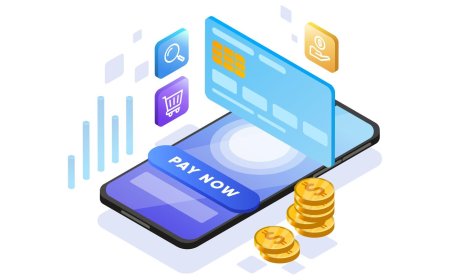Breaking the Feed: How Digital Media Is Changing the Way We Consume News

In recent years, the phrase breaking the feed has come to represent a significant shift in how people consume news. Digital media platforms have changed the rules, and traditional ways of getting news are no longer the onlyor even the mainways people stay informed. The rise of social media, mobile apps, and online news sources means that news is now more immediate, more personalized, but also more fragmented than ever before.
In this blog post, we'll explore how digital media is reshaping news consumption, what this means for everyday readers, and how to stay informed in a world full of constant updates and breaking headlines.
The Rise of Digital News Consumption
Over the last decade, the way we get news has moved away from newspapers, TV, and radio toward digital channels. Smartphones and the internet have made it easy to access news anytime and anywhere. This convenience has changed how people interact with news content.
Here are some key factors driving this shift:
-
Real-time updates: News now breaks instantly, often shared first on social media.
-
Multiple platforms: News is available on websites, apps, social feeds, podcasts, and videos.
-
Personalized feeds: Algorithms customize what news stories you see based on your preferences and behavior.
-
User participation: Readers can comment, share, and even create their own news content.
The combination of these factors means people dont have to look for newsit often comes to them, interrupting their day in brief moments.
How Social Media Changed the News Game
Social media platforms like Twitter, Facebook, Instagram, and TikTok have become powerful tools for distributing news. For many, these apps are the first stop when looking for updates or new stories.
Benefits of Social Media for News
-
Speed: Breaking news spreads rapidly, sometimes before traditional media covers it.
-
Accessibility: Anyone with a smartphone can access news stories and share them.
-
Variety: News comes from many sources, including citizen journalists and independent outlets.
-
Engagement: Users can respond, discuss, and debate news in real-time.
Challenges Social Media Brings
-
Misinformation: False or misleading news can spread quickly before being checked.
-
Echo chambers: Algorithms may show you news that aligns with your views, limiting exposure to different opinions.
-
Superficial coverage: Short posts or videos may lack depth and context.
-
Distraction: Constant updates can overwhelm and fragment attention.
Because of these challenges, its important for news consumers to approach social media with caution, verifying sources and being mindful of what they share.
What Happens to Traditional News Outlets?
Traditional news organizationsnewspapers, TV networks, and radio stationshave been impacted by the digital shift. Many have struggled to maintain their audiences and revenues as advertising dollars move to online platforms like Google and Facebook.
The Effects on Traditional Media
-
Declining print sales: Fewer people buy physical newspapers.
-
Changing revenue models: Advertising is now largely digital and often dominated by big tech.
-
Shift to digital: Many outlets have launched websites, apps, and newsletters to stay relevant.
-
Resource cuts: Smaller staffs and fewer local reporters can mean less original reporting.
Despite these challenges, established news organizations often remain crucial sources of verified, in-depth reporting. They are adapting by focusing on digital subscriptions and creating content designed specifically for online audiences.
Tips for Being a Smart News Consumer Today
With so many sources and platforms, staying well-informed can feel overwhelming. Here are some practical tips to help you navigate the modern news environment:
-
Use multiple sources: Dont rely on a single platform or outlet. Mix mainstream and independent news.
-
Check credentials: Look at who is publishing the information and their reputation.
-
Avoid clickbait: Headlines are designed to get clicks but dont always reflect the full story.
-
Look for context: Seek out background and additional information to understand the full picture.
-
Be aware of bias: All media have some perspectiverecognize it and try to read broadly.
-
Set limits: Too much news can be stressful; take breaks and avoid constant scrolling.
Being a careful reader is more important now than ever. The way news is delivered might have changed, but the goal remains the same: to understand what is happening in the world clearly and accurately.
Looking Ahead: Whats Next for News Consumption?
The future of news will likely include more changes, driven by technology and audience habits. Some trends to watch include:
-
AI and automation: Some outlets are already using AI to write summaries or generate reports, which could speed up news production but raises questions about quality.
-
Personal brands: Journalists and experts are using social media to connect directly with audiences through podcasts, video channels, and newsletters.
-
Local news initiatives: Efforts to revive local journalism through nonprofits and community funding are gaining ground.
-
Subscription models: Paid digital subscriptions are becoming more common as outlets try to reduce reliance on advertising.
News consumption will keep evolving, but readers will continue to need tools and skills to separate fact from noise.
Before we wrap up, its interesting to note how digital medias reach extends beyond just traditional news topics. For example, trends in health and lifestyle news, such as vaping, are now widespread online. By staying informed from varied sources and questioning the news we see, we can make sense of the flood of information. Whether you're checking the morning headlines on your phone or diving into a detailed report online, remember that good news consumption is about balance, curiosity, and care.
People search for reliable information and also for the best vape flavors, showing how digital platforms serve diverse interests.
Final Thoughts
Breaking the feed means more than just seeing the latest updateit reflects how news reaches us in new ways and how our habits must adapt. Digital media has made news more immediate and accessible but also requires us to be more thoughtful about what we consume.
By staying informed from varied sources and questioning the news we see, we can make sense of the flood of information. Whether you're checking the morning headlines on your phone or diving into a detailed report online, remember that good news consumption is about balance, curiosity, and care.
Thanks for readingstay informed, stay curious!




























